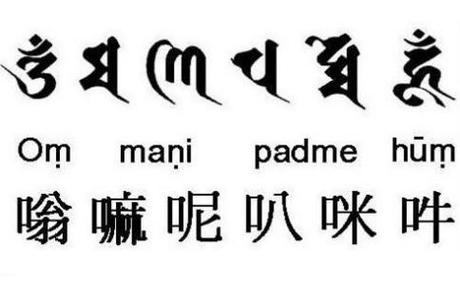Meaning of Om Padme Mani Hum: A Deep Dive into Its Significance and Symbolism
Om Padme Mani Hum is a powerful mantra that holds immense significance in Tibetan Buddhism. This mantra, which translates to “Hail to the Jewel in the Lotus,” is often chanted by practitioners to invoke the blessings of Avalokiteshvara, the Buddha of Compassion. In this article, we will explore the meaning, symbolism, and various dimensions of this profound mantra.
Origins and Historical Context
The mantra Om Padme Mani Hum has its roots in the Buddhist tradition, particularly in the teachings of the Lotus Sutra. It is believed to have been revealed by the Buddha himself to Manjushri, the embodiment of wisdom. The mantra gained popularity during the reign of King Songtsen Gampo in the 7th century, who was a great patron of Buddhism in Tibet.
Symbolism of the Mantra
The mantra Om Padme Mani Hum is composed of four parts, each carrying its own unique symbolism:
| Part | Symbolism |
|---|---|
| Om | Represents the universe and the ultimate reality. |
| Padme | Symbolizes the lotus flower, which represents purity and beauty. |
| Mani | Represents the jewel, which symbolizes the preciousness of the Dharma (Buddhist teachings). |
| Hum | Is a seed syllable that signifies the presence of the Buddha. |
Practical Applications
Om Padme Mani Hum is not only a mantra but also a practice. Practitioners recite it to cultivate compassion, wisdom, and purity of mind. The mantra is believed to purify the mind, remove obstacles, and bring about enlightenment. Here are some practical applications of the mantra:
-
Chanting: Practitioners recite the mantra repeatedly, focusing on its meaning and symbolism.
-
Mantra Meditation: Meditating on the mantra helps in deepening the understanding of its meaning and its effects on the mind.

-
Visualization: Practitioners visualize the mantra and its symbolism, imagining the lotus flower blooming with the jewel inside, representing the Dharma.
-
Offerings: Offering mantras to the Buddha or to others is considered a way to accumulate merit and spread compassion.
Cultural Significance
The mantra Om Padme Mani Hum has become a symbol of Tibetan Buddhism and its cultural heritage. It is often seen in various forms, such as prayer flags, thangkas (Tibetan paintings), and statues. The mantra has also been a source of inspiration for artists, musicians, and writers, contributing to the rich tapestry of Tibetan culture.
Modern Relevance
In today’s fast-paced world, the mantra Om Padme Mani Hum continues to hold relevance. Its message of compassion, wisdom, and purity resonates with people from all walks of life. The mantra serves as a reminder to cultivate inner peace, empathy, and understanding, helping individuals navigate the challenges of modern life.
Conclusion
Om Padme Mani Hum is a profound mantra that encapsulates the essence of Tibetan Buddhism. Its origins, symbolism, and practical applications make it a valuable tool for spiritual growth and personal development. Whether you are a practitioner or simply curious about the teachings of Buddhism, exploring the meaning of this mantra can provide valuable insights into the path of compassion and wisdom.




